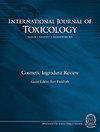使用笼边观察或高清视频监控临床前物种神经临床症状的自发发生率:回顾性分析
IF 1
4区 医学
Q4 PHARMACOLOGY & PHARMACY
引用次数: 0
摘要
在进行毒理学研究时,解释与药物相关的神经学临床症状,如抽搐、肌阵挛/肌阵挛抽搐、震颤、共济失调和流涎,需要了解这些在常用实验动物物种中观察到的自发发生率。采用笼侧观察或高清视频监控,回顾性分析单一设施对照动物中枢神经系统临床症状的自发发生率。在比格犬和Sprague-Dawley大鼠中自发性惊厥发生率低,但在食蟹猴和Göttingen迷你猪中未发现自发性惊厥。自发性肌阵挛性抽搐和肌肉抽搐在Beagle犬、食蟹猴和Sprague-Dawley大鼠中发生率低,但在Göttingen迷你猪中未见。在所有物种中都发现了自发性共济失调/不协调,并且在使用视频监控时通常具有更高的发生率。流涎和震颤是两种最常见的自发临床症状,在所有物种中都观察到这两种症状。当前研究的数据揭示了从单一研究中获得的对照数据在提供Beagle犬、食蟹猴、Sprague-Dawley大鼠和Göttingen迷你猪的历史对照数据的同时,用于与低发病率神经临床症状相关的毒理学解释时的潜在局限性。本文章由计算机程序翻译,如有差异,请以英文原文为准。
The Spontaneous Incidence of Neurological Clinical Signs in Preclinical Species Using Cage-side Observations or High-definition Video Monitoring: A Retrospective Analysis
When conducting toxicology studies, the interpretation of drug-related neurological clinical signs such as convulsions, myoclonus/myoclonic jerks, tremors, ataxia, and salivation requires an understanding of the spontaneous incidence of those observations in commonly used laboratory animal species. The spontaneous incidence of central nervous system clinical signs in control animals from a single facility using cage-side observations or high definition video monitoring was retrospectively analyzed. Spontaneous convulsions were observed at low incidence in Beagle dogs and Sprague–Dawley rats but were not identified in cynomolgus monkeys and Göttingen minipigs. Spontaneous myoclonic jerks and muscle twitches were observed at low incidence in Beagle dogs, cynomolgus monkeys, and Sprague–Dawley rats but were not seen in Göttingen minipigs. Spontaneous ataxia/incoordination was identified in all species and generally with a higher incidence when using video monitoring. Salivation and tremors were the two most frequent spontaneous clinical signs and both were observed in all species. Data from the current study unveil potential limitations when using control data obtained from a single study for toxicology interpretation related to low incidence neurological clinical signs while providing historical control data from Beagle dogs, cynomolgus monkeys, Sprague–Dawley rats, and Göttingen minipigs.
求助全文
通过发布文献求助,成功后即可免费获取论文全文。
去求助
来源期刊
CiteScore
3.40
自引率
4.50%
发文量
53
审稿时长
4.5 months
期刊介绍:
The International Journal of Toxicology publishes timely, peer-reviewed papers on current topics important to toxicologists. Six bi-monthly issues cover a wide range of topics, including contemporary issues in toxicology, safety assessments, novel approaches to toxicological testing, mechanisms of toxicity, biomarkers, and risk assessment. The Journal also publishes invited reviews on contemporary topics, and features articles based on symposia. In addition, supplemental issues are routinely published on various special topics, including three supplements devoted to contributions from the Cosmetic Review Expert Panel.

 求助内容:
求助内容: 应助结果提醒方式:
应助结果提醒方式:


